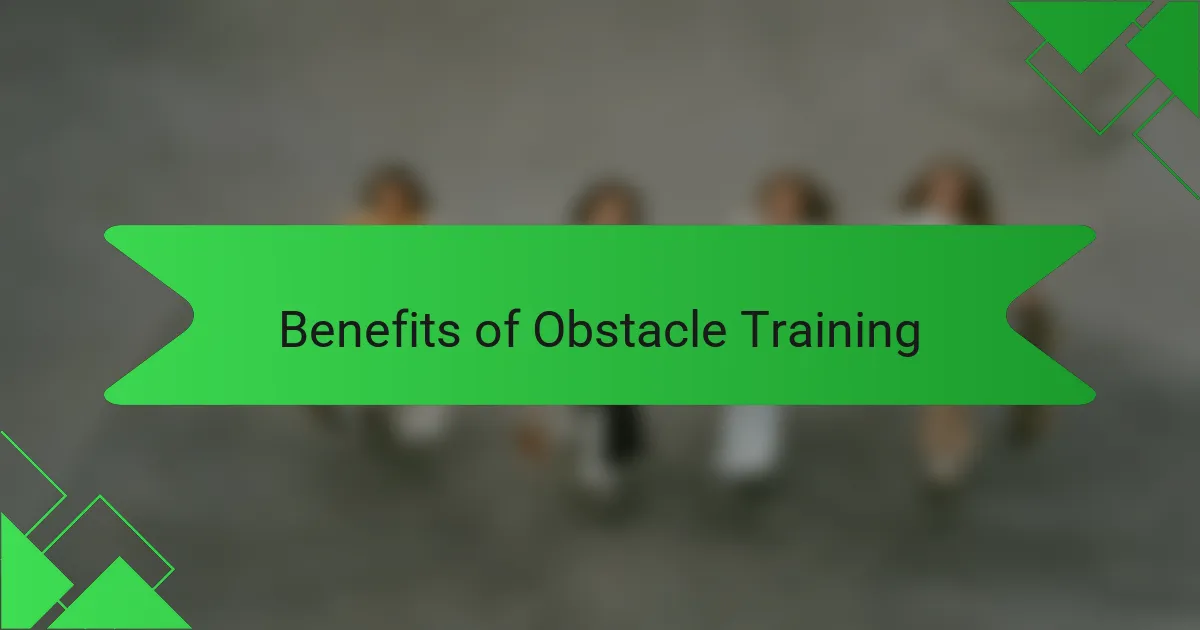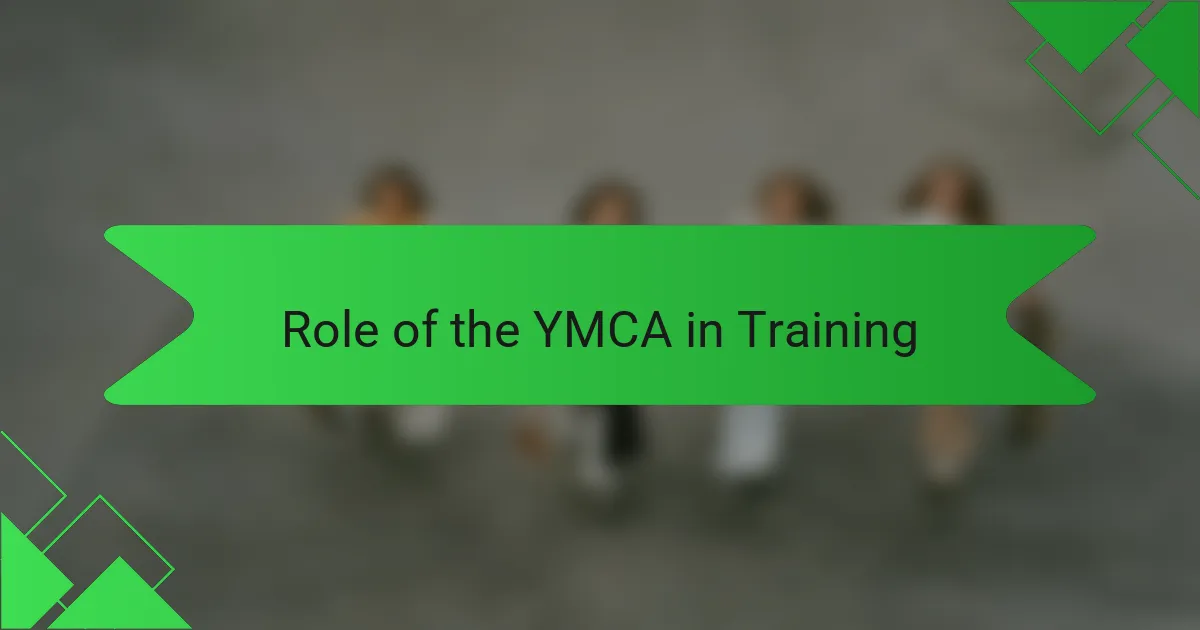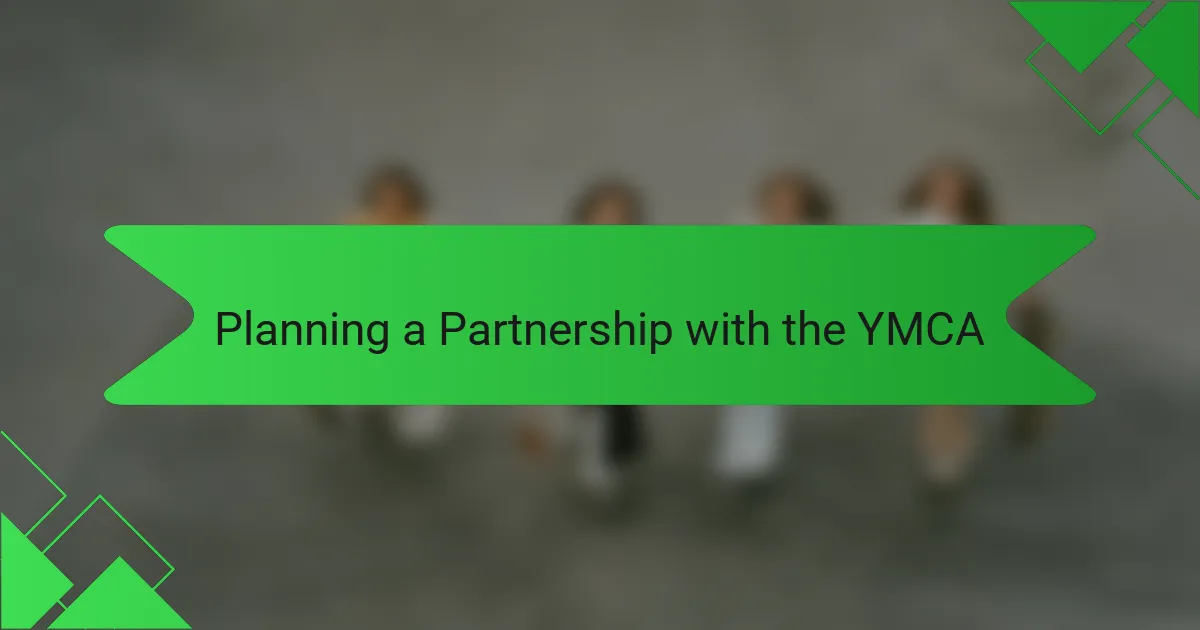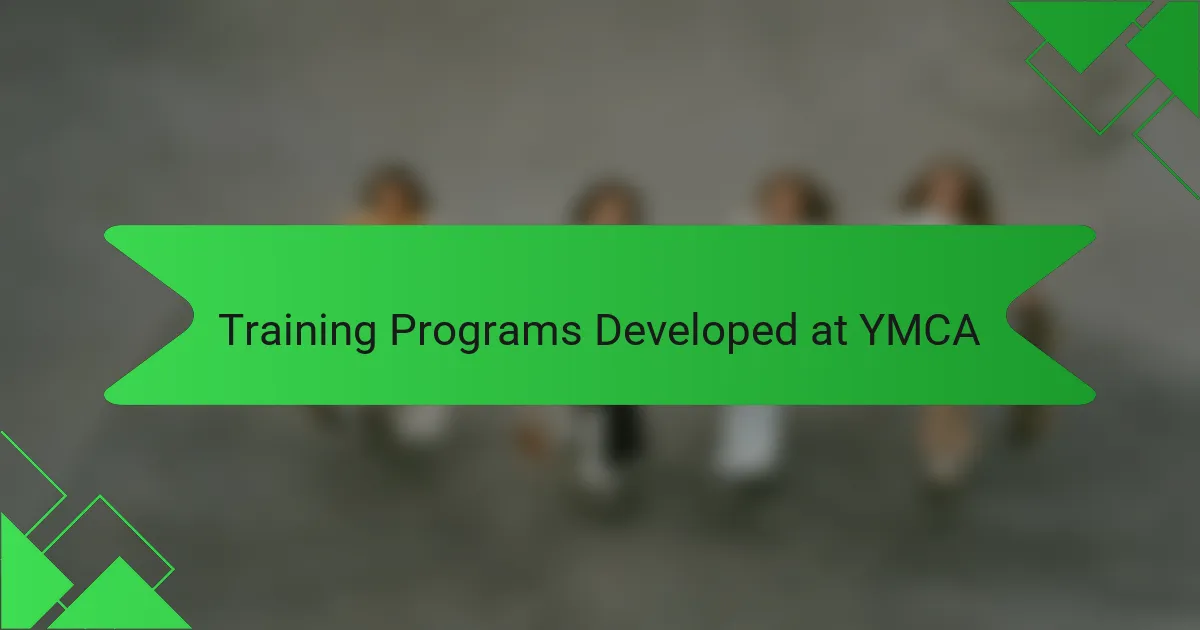Key takeaways
- Obstacle course racing combines physical challenges and mental grit, promoting personal growth and community spirit through shared experiences.
- Training offers multiple benefits, enhancing coordination, endurance, and resilience, while also providing a unique way to stay motivated and engaged.
- The YMCA plays a vital role in fostering inclusive training environments, promoting holistic fitness tailored to the demands of obstacle racing.
- Success in obstacle training relies on consistency, technique, and recovery, enabling athletes to adapt and progress effectively while avoiding setbacks.

What Is Obstacle Course Racing
Obstacle course racing is far more than just running; it’s a thrilling blend of physical challenges and mental grit. I remember the rush of adrenaline the first time I faced a muddy wall—it wasn’t just about strength, but problem-solving on the fly. Have you ever felt that mix of excitement and uncertainty when tackling an unexpected hurdle? That’s the essence of the sport.
What I find fascinating is how obstacle course racing pushes you to test your limits in ways traditional running never does. It demands agility, endurance, and a bit of creativity—the kind of diverse fitness that keeps every race fresh and unpredictable. Each obstacle tells a different story, inviting you to conquer fears and celebrate small victories.
At its core, obstacle course racing connects people through shared challenges. It’s not just a race against the clock, but a journey that often sparks personal growth and community spirit. Don’t you think that’s what makes it so addictive?

Benefits of Obstacle Training
Obstacle training offers incredible benefits that go beyond just building muscles. From my experience, it sharpens coordination and balance in ways conventional workouts don’t. Have you noticed how navigating tricky obstacles makes you more aware of your body’s movements? That awareness translates into real-world agility and confidence.
Endurance is another huge plus. I’ve found that obstacle training pushes your cardiovascular system hard while mixing in strength bursts, making your fitness more well-rounded. It’s like your body learns to handle diverse demands at once—something regular running rarely achieves. Doesn’t that variety keep you motivated to train consistently?
Mentally, obstacle training is a game changer. Each challenge forces you to think quickly and adapt, which builds resilience. When I first mastered a tough rope climb, it wasn’t just physical strength that got me through but the mindset of refusing to quit. Have you ever felt that surge of accomplishment when overcoming a fear or obstacle in training? That feeling stays with you long after the course is cleared.

Role of the YMCA in Training
The YMCA plays a crucial role in obstacle training by providing accessible, structured environments where both beginners and seasoned racers can build essential skills. I’ve seen firsthand how their well-equipped facilities and knowledgeable instructors create a safe space to experiment and improve without the pressure of competition.
What stands out to me is how the YMCA fosters a sense of community during training sessions. It’s not just about individual progress; it’s about encouraging each other through challenges, which mirrors the supportive spirit of obstacle course racing itself. Have you ever noticed how training alongside others can push you beyond your comfort zone?
Their programs also emphasize holistic fitness—strength, endurance, flexibility—all tailored to the demands of obstacle racing. When I trained at a local YMCA, the variety in workouts kept me engaged and prepared me for whatever the course threw my way. Doesn’t having that kind of comprehensive preparation make you feel more confident on race day?

Planning a Partnership with the YMCA
Planning a partnership with the YMCA felt like a natural next step for me after seeing how their community embraces fitness diversity. When I first approached them, I wondered if their structured programs could be adapted specifically for obstacle training—and the answer was a resounding yes. Have you ever reached out to a potential partner and been pleasantly surprised by how open and collaborative they can be?
I remember the detailed discussions we had about aligning our goals. It wasn’t just about offering space; it was about creating a shared vision that benefits both the YMCA community and obstacle racers like me. That kind of intentional planning made me realize how crucial clear communication is right from the start. Don’t you think laying a strong foundation makes all the difference in any collaboration?
With their flexible facilities and committed staff, tailoring obstacle-specific training sessions seemed exciting but also challenging in the best way. I envisioned workshops that would combine the YMCA’s expertise with the unique demands of obstacle course racers—a mix that could elevate everyone involved. How often do you get a chance to build something new that supports both athletes and the local community?

My Experience Partnering with the YMCA
Partnering with the YMCA has been a rewarding experience that exceeded my expectations in many ways. I was pleasantly surprised by how warmly their team welcomed the idea of integrating obstacle training into their existing programs. Have you ever felt that boost of motivation when you realize others share your passion? That’s exactly what happened during our first joint session.
What stood out most to me was the YMCA’s genuine commitment to inclusivity and encouragement. Watching members of all fitness levels tackle obstacles together created a vibe that felt both supportive and energized. It made me think—how often do we find spaces where camaraderie and challenge coexist so naturally?
Of course, working together wasn’t without its learning moments. I recall one early drill where the timing and pacing needed fine-tuning to fit both beginner needs and more advanced racers. Those adjustments reminded me how important flexibility and listening are when building partnerships. Have you ever had to recalibrate your approach on the fly? That real-time problem solving felt like a perfect nod to what obstacle racing is all about.

Training Programs Developed at YMCA
The training programs developed at the YMCA truly impressed me with their thoughtful design. They blend strength, endurance, and agility drills in ways that mirror real obstacle course demands, making every session feel purposeful. Have you ever walked into a workout and instantly sensed it was crafted with the sport’s unique challenges in mind? That’s exactly how these programs felt.
What’s more, the YMCA doesn’t just offer cookie-cutter routines—they tailor their training schedules to accommodate different skill levels and goals. I recall one evening when a coach adjusted my workout on the spot to target my weak grip strength, which made all the difference on the monkey bars. Isn’t that personalized attention what helps runners transform into true obstacle athletes?
Another aspect I admire is their emphasis on functional fitness—the kind that translates directly to conquering obstacles on race day. From crawling under nets to explosive climbs, their exercises mimic what we face in races, creating confidence before we even reach the course. Doesn’t it feel great knowing your training isn’t just exercise but real-world preparation?

Tips for Success in Obstacle Training
Success in obstacle training, in my experience, hinges on consistency and progression. I’ve learned that starting with manageable challenges and gradually increasing difficulty helps your body and mind adapt without overwhelming you. Have you ever felt that boost of confidence when you realize you’ve tackled a skill or obstacle that once seemed impossible?
Another tip I swear by is focusing on technique rather than brute force. When I first struggled with the rope climb, it wasn’t raw strength that got me through but learning how to use my legs efficiently to save energy. Isn’t it fascinating how a small shift in approach can make a huge difference in performance?
Lastly, don’t underestimate recovery and listening to your body. Early on, I ignored aches and pushed through fatigue, only to set back my progress. Taking the time to rest, stretch, and nourish yourself keeps you ready to face each new obstacle with fresh determination. Have you noticed how well-rested muscles just perform better during those tough trainings?
